#Organic npk fertilizer uses
Text
9 Best Organic NPK Fertilizers in 2024
In the world of gardening and farming, one term you’ll often come across is ‘NPK Fertilizer’. But what does it mean? And why is it so important? NPK stands for Nitrogen, Phosphorus, and Potassium, three vital nutrients that plants need to thrive. While there are many types of fertilizers available in the market, this blog post focuses on organic NPK fertilizers.
Why organic, you ask? Organic NPK…
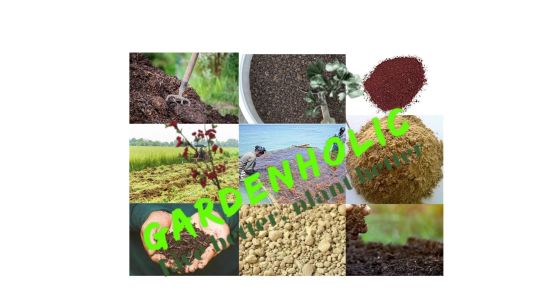
View On WordPress
#best organic npk fertilizer#conclusion of blog post#Gardening tips#how do chemical pesticides affect plants#How do you make natural NPK fertilizer at home?#how to apply natural pesticide#how to use organic pesticides around children and pets#natural fertilizers#natural pesticide#npk liquid fertilizer iffco#organic fertilizers#organic gardening#organic npk 19:19:19#organic npk fertilizer 50 kg price#organic npk fertilizer at home#organic npk fertilizer india#Organic npk fertilizer price#Organic npk fertilizer uses#resources for gardeners#What is NPK organic fertilizer?#Which is the best organic NPK fertilizer?#Which is the best organic NPK fertilizer? How do you make natural NPK fertilizer at home? Which organic fertilizer has the highest NPK? What#Which organic fertilizer has the highest NPK?
0 notes
Text
gilmose
base oil
avocado oil
aleo Vera oil
argan oil
water soluble fertilizer
ureal fertilizer
potassium sulfate fertilizer
potassium formate
NPK Fertilizer
humic acid fertilizers
bulk blending fertilizer
bio organic fertilizer
ammonium bicarbonate
Red bull, black bull
pepsi
monster energy drink
Heineken drinks
fanta drinks
coca cola
carlsberg beer
1664 kronenbourg
monel alloy
copper wire scrap
copper millberry scrap
copper cathode
Used RailsAluminum wheel scrap
Aluminum scrap
Aluminum ingot
Aluminum Cans scrap
yellow corn
white corn
wheat bran
wheat
soyabean
sisal fiber
flour
barley
biomass boiler housing containers
tri door containers
9ft shipping containers
8ft shipping containers
6ft shipping containers
45ft shipping containers
40ft shipping containers
30ft shipping containers
20ft shipping container
10ft shipping container
Shipping containers
#<a href=“https://www.gilmoselimitedltd.co”rel=“dofollow”>base oil</a>#<a href=“https://www.gilmoselimitedltd.co”rel=“dofollow”>avocado oil</a>#<a href=“https://www.gilmoselimitedltd.co”rel=“dofollow”>aleo Vera oil</a>#<a href=“https://www.gilmoselimitedltd.co”rel=“dofollow”>argan oil</a>#<a href=“https://www.gilmoselimitedltd.co”rel=“dofollow”>water soluble fertilizer</a>#<a href=“https://www.gilmoselimitedltd.co”rel=“dofollow”>ureal fertilizer</a>#<a href=“https://www.gilmoselimitedltd.co”rel=“dofollow”>potassium sulfate fertilizer</a>#<a href=“https://www.gilmoselimitedltd.co”rel=“dofollow”>potassium formate</a>#<a href=“https://www.gilmoselimitedltd.co”rel=“dofollow”>NPK Fertilizer</a>#<a href=“https://www.gilmoselimitedltd.co”rel=“dofollow”>humic acid fertilizers</a>#<a href=“https://www.gilmoselimitedltd.co”rel=“dofollow”>bulk blending fertilizer</a>#<a href=“https://www.gilmoselimitedltd.co”rel=“dofollow”>bio organic fertilizer</a>#<a href=“https://www.gilmoselimitedltd.co”rel=“dofollow”>ammonium bicarbonate</a>#<a href=“https://www.gilmoselimitedltd.co”rel=“dofollow”>Red bull#black bull</a>#<a href=“https://www.gilmoselimitedltd.co”rel=“dofollow”>pepsi</a>#<a href=“https://www.gilmoselimitedltd.co”rel=“dofollow”>monster energy drink</a>#<a href=“https://www.gilmoselimitedltd.co”rel=“dofollow”>Heineken drinks</a>#<a href=“https://www.gilmoselimitedltd.co”rel=“dofollow”>fanta drinks</a>#<a href=“https://www.gilmoselimitedltd.co”rel=“dofollow”>coca cola</a>#<a href=“https://www.gilmoselimitedltd.co”rel=“dofollow”>carlsberg beer</a>#<a href=“https://www.gilmoselimitedltd.co”rel=“dofollow”>1664 kronenbourg</a>#<a href=“https://www.gilmoselimitedltd.co”dofollow“>monel alloy</a>#<a href=“https://www.gilmoselimitedltd.co”rel=“dofollow”>copper wire scrap</a>#<a href=“https://www.gilmoselimitedltd.co”rel=“dofollow”>copper millberry scrap</a>#<a href=“https://www.gilmoselimitedltd.co”rel=“dofollow”>copper cathode</a>#<a href=“https://www.gilmoselimitedltd.co”rel=“dofollow”></a>#Used Rails<a href=“https://www.gilmoselimitedltd.co”rel=“dofollow”>Aluminum wheel scrap</a>#<a href=“https://www.gilmoselimitedltd.co”rel=“dofollow”>Aluminum scrap</a>#<a href=“https://www.gilmoselimitedltd.co”rel=“dofollow”>Aluminum ingot</a>
0 notes
Text
Adenium plant
Adenium plant
Adenium plant is a popular succulent plant and indoor bonsai plant. The adenium plant also called as "desert rose" and this adenium plant belongs to the Apocynaceae family. Adenium desert rose are known for unique appearance and beautiful star-shaped flower. And most commonly cultivated variety is "adenium obesum". These desert roses grow up to a height of 3 feet to 6 feet tall. And "adenium somalense" naturally tends to grow up to a height of 6 to 10 feet.

How to grow adenium desert rose
Adenium desert rose requires an abundant amount of care. These desert rose requires bright light and indirect sunlight. These desert rose are grow in mild hot areas.

Flower
These adenium desert rose has attractive foliage, star shape, and their symmetrical pattern of petals that give a unique appearance. Adenium desert roses have a wide range of color shades that includes pink, white, red, and purple and some varieties have bi-color and multi-color too. The size of the flower varies from growing conditions generally adenium desert rose flowers scale 2 to 4 inches.

Soil
Soil should be on the PH scale of 6.5 to 7.0. These desert rose requires well-draining soil that helps to prevent waterlogging to avoid root spoiling. A normal mixture of Bio-NPK with sand goes well for the growth of adenium.

Watering
Adenium desert rose are succulents that don't require more water for their growth. While watering these require a less amount of water so to ensure after watering the top layer should be dry and water shouldn't stay in the pot. It’s better to water frequently in the growing season and reduce watering in the winter season.
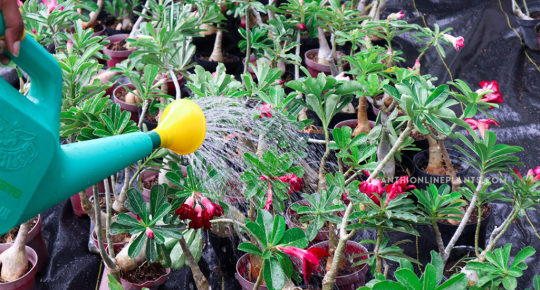
Sunlight
Desert rose plant requires bright light and indirect sunlight. Desert rose are grow both in outdoors and indoors. In outdoor conditions, they need to be placed in a shade receiving area to avoid high temperatures.

Fertilizers
Treat desert rose plant with Bio-NPK. Organic fertilizers such as seaweeds and composted materials are used in the growth of desert rose plants. The Desert rose plant is a slow-growing plant it only requires few nutrients. Application of steamed bone meal increase the colour of flower.

Propagation
Desert rose plants propagated through stem cuttings, seeds and grafting. For stem cuttings choose a healthy mother plant. The other technique is grafting in which join a piece of scion onto different rootstock.

Pruning
Pruning in this plants by cutting the infected branch helps to encourage new branching and by removing dead parts which helps in the efficient growth of this plant
#Desert rose plant requires bright light and indirect sunlight. Desert rose are grow both in outdoors and indoors. In outdoor conditions#they need to be placed in a shade receiving area to avoid high temperatures.#Image#Fertilizers#Treat desert rose plant with Bio-NPK. Organic fertilizers such as seaweeds and composted materials are used in the growth of desert rose pl#Propagation#Desert rose plants propagated through stem cuttings#seeds and grafting. For stem cuttings choose a healthy mother plant. The other technique is grafting in which join a piece of scion onto di#Pruning#Pruning in this plants by cutting the infected branch helps to encourage new branching and by removing dead parts which helps in the effici
0 notes
Text
Adenium plant
Adenium plant
Adenium plant is a popular succulent plant and indoor bonsai plant. The adenium plant also called as "desert rose" and this adenium plant belongs to the Apocynaceae family. Adenium desert rose are known for unique appearance and beautiful star-shaped flower. And most commonly cultivated variety is "adenium obesum". These desert roses grow up to a height of 3 feet to 6 feet tall. And "adenium somalense" naturally tends to grow up to a height of 6 to 10 feet.

How to grow adenium desert rose
Adenium desert rose requires an abundant amount of care. These desert rose requires bright light and indirect sunlight. These desert rose are grow in mild hot areas.

Flower
These adenium desert rose has attractive foliage, star shape, and their symmetrical pattern of petals that give a unique appearance. Adenium desert roses have a wide range of color shades that includes pink, white, red, and purple and some varieties have bi-color and multi-color too. The size of the flower varies from growing conditions generally adenium desert rose flowers scale 2 to 4 inches.

Soil
Soil should be on the PH scale of 6.5 to 7.0. These desert rose requires well-draining soil that helps to prevent waterlogging to avoid root spoiling. A normal mixture of Bio-NPK with sand goes well for the growth of adenium.

Watering
Adenium desert rose are succulents that don't require more water for their growth. While watering these require a less amount of water so to ensure after watering the top layer should be dry and water shouldn't stay in the pot. It’s better to water frequently in the growing season and reduce watering in the winter season.
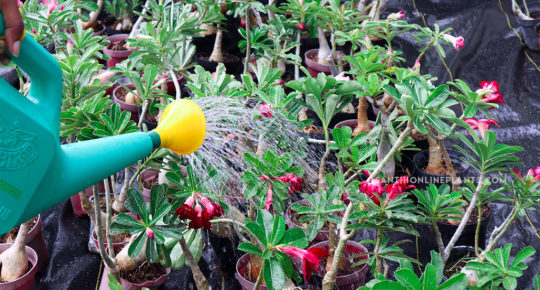
Sunlight
Desert rose plant requires bright light and indirect sunlight. Desert rose are grow both in outdoors and indoors. In outdoor conditions, they need to be placed in a shade receiving area to avoid high temperatures.

Fertilizers
Treat desert rose plant with Bio-NPK. Organic fertilizers such as seaweeds and composted materials are used in the growth of desert rose plants. The Desert rose plant is a slow-growing plant it only requires few nutrients. Application of steamed bone meal increase the colour of flower.

Propagation
Desert rose plants propagated through stem cuttings, seeds and grafting. For stem cuttings choose a healthy mother plant. The other technique is grafting in which join a piece of scion onto different rootstock.

Pruning
Pruning in this plants by cutting the infected branch helps to encourage new branching and by removing dead parts which helps in the efficient growth of this plant
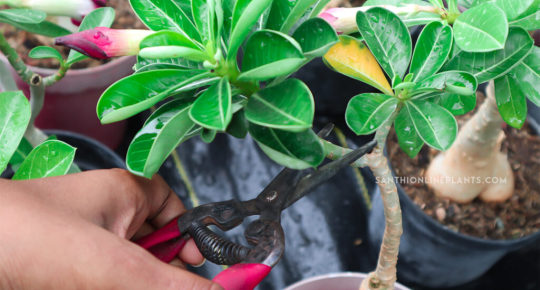
Repotting
Adenium plants are repotted after two years of planted. For repotting, the pot should be large and filled with well-draining soil.

#Image#Fertilizers#Treat desert rose plant with Bio-NPK. Organic fertilizers such as seaweeds and composted materials are used in the growth of desert rose pl#Propagation#Desert rose plants propagated through stem cuttings#seeds and grafting. For stem cuttings choose a healthy mother plant. The other technique is grafting in which join a piece of scion onto di#Pruning#Pruning in this plants by cutting the infected branch helps to encourage new branching and by removing dead parts which helps in the effici#Repotting#Adenium plants are repotted after two years of planted. For repotting#the pot should be large and filled with well-draining soil.
0 notes
Text
On the Skidelsky/Fuller post I reblogged, I absolutely welcome automation given the following criteria:
1. The output is identical or, holistically, more positive than human labor output
2. This automation occurs within an economic system in which GDP growth (or similarly fraught metrics) is not the primary objective
3. The automation aids the sustainability of nature and humanity
The USA's agriculture industry is a wonderful example of modern automation failing all three of these criteria. Throughout the entire industrial revolution, agriculture has trended away from being a society-wide confederation of family/community-scale, labor-intensive smallholdings to our current reality of a small number of monolithic industrial farms that are maintained by astoundingly few people who operate increasingly complex and expensive equipment.
Our massive-scale industrial farms are fantastic at what they were designed for; they grow as much of a staple crop as possible without regard to human or environmental health, doing so using minimal labor. Fundamentally, it is an extractive industry. Fossil fuels are extracted to power the machinery, processing, and logistics systems. Nutrients are extracted from the soil to the point that crop growth can only be sustained with heavy amounts of industrial fertilizer input. Entire ecosystems are sacrificed when forests are cleared to be exploited and repeatedly battered with pesticides. This is all primarily to produce soybeans, feed corn, and cotton to then process into products like factory farm livestock feed-slurry, corn syrup, junk food, and sweatshop garments. Secondarily, it is to produce flavorless, nutrition-void produce that can be sold year-round. Consistency is the goal, although one may find that nature itself is curiously inconsistent.
This case study of automation's failings can be traced back to a few major factors:
1. Old-style agriculture work is disagreeable to the USA's perverted fascination for infinite GDP growth; each farm laborer that can be replaced by a machine is a potential worker that could move into a city (or suburb) and put in the same amount of hours at a higher-dollar job. It's just opportunity cost, and this is more-or-less what Skidelsky and Fuller find offensive about our current labor zeitgeist; instead of the now-jobless laborers being free to pursue their interests, they are instead shoehorned into some shitty desk job that produces a relatively greater amount of money to be leeched by executives and shareholders -- this is "more productive" to our economy on the basis of GDP growth and thus must be prioritized over agricultural labor.
2. Industrial approaches to large-scale agriculture are inherently reductive to an extreme extent. Nature is far more complex than Liebig or any other enlightenment thinker ever imagined. Industrialization is great at making cars or computer chips or Gucci jackets or whatever, as these are things that can be standardized with relative ease. Nature cannot be tamed and standardized in a similar way; ecosystems, particularly soil ecosystems, can vary massively even in small areas of the same climate type. Our agriculture systems cope with this simply by ignoring such factors and reducing crop growth to a formula. In X region, plant Y variety of Z crop on A date and apply a regimen of B-type fertilizer and C-type pesticide on D date etc etc. This is the most egregious reduction of something in all of history.
Liebig's reduction of agriculture to the NPK model, just three elements, is good for achieving the singular goal of making your plant of choice come out of the ground, but it ignores all the nuance of soil, climate, and evolution. The other factors don't matter. Modern lab-designed fertilizers often feature a plethora of additional micronutrients, but the goal is still to produce a healthy crop, not healthy soil. Soil itself is an organism, it is something that must be nurtured to be healthy; industrial pesticide/fertilizer regimens are to the soil as feed slurry/antibiotic regimens are to factory farm animals.
Natural processes are, itself, the greatest form of automation for agriculture. Plants and animals that are native to a region have evolved to grow there regardless of human intervention. It is our disruption of these processes that forces agriculture to be labor/resource-intensive. This isn't to say that everyone must immediately abandon all non-native foods and adopt a primarily undomesticated Ötzi diet, but instead, it's worth considering that the complexity of modern technology is not even close to being at parity with the complexity of nature; nature has a several billion year head start. There is no way to flawlessly "tame" it with technological solutions, but a comfortable middle ground can certainly be found.
If sustainable, climate-friendly food production is the primary objective of agriculture, this is far more easily achieved by small, ecology-considerate farms than massive, largely automated industrial farms. A healthy soil ecosystem will aid in growth, flavor, nutrition, and, (quite importantly) carbon sequestration. Broadforking, shoveling, and wheelbarrow-pushing is absolutely more labor intensive than sitting back in a huge John Deere tractor with GPS-based autopiloting features, but the extra labor can turn a woefully extractive process into one that is instead highly regenerative.
20 notes
·
View notes
Text
Black Salt Spell for the Garden
Most of my free time is spent in the garden. Rain or shine, that's most likely where you'll find me. I also work with a deity of nature and plants. So it makes sense that most of my magic is garden related.
This is an idea that came to me while researching different organic powdered fertilizers. I started mixing different ingredients together based on what my plants needed and it was hard to not think of making black salt.
The two most common components of black salt are salt and charcoal. While we all know salt and plants don't mix, charcoal has been used in farming for at least 2,500 years in the form of Terra Preta aka, biochar. The salt can be replaced with epsom salt -which has magnesium, a valuable element for plant health- and you have a garden safe and beneficial soil amendment for your plants!
For the most basic approach to this recipe I recommend one part crushed biochar to 3-4 parts epsom salt.
But we can make this more special with the addition of more ingredients. Some examples:
Coffee Grounds after you brew your coffee you can dry out the used grounds and add them to the black salt base. Coffee is a great source of nitrogen and, contrary to popular belief, the used grounds won't add acidity to your soil. Some sources used coffee grounds for focus, luck, grounding no pun intended, or for speeding up a spell.
Tea Leaves similar to coffee, used tea leaves are a good nitrogen source and the microbes and worms in the soil will appreciate the already broken down bio matter. When tea is brewed with a specific intention that intention is passed into the tea leaves as well making them an excellent spell ingredient.
Wood Ashes incense ash is a popular addition to black salt, sometimes replacing charcoal altogether. Incense ash can be added to garden safe black salt, though I can't speak to its mundane benefits. Wood ash has an NPK ratio of 0-1-3 making it high in potassium as well as many micronutrients that can feed your soil. Saving the ashes form ritual fires can imbue the salt with that same energy. Wood ash will make your soil more alkaline so keep it away from acid loving plants like blueberries!
Egg Shells are full of calcium which is necessary for the structure of cell walls in plants. Save your egg shells after cooking and let them dry out before crushing them into as fine a powder as you can, then add them to the salt. The calcium won't be available to your plants for about one year as the shells break down s l o w l y but I like to use this to my advantage in spell work. Egg shells can be used for protection and fertility so that can be a year long protection or fertility spell.
Store bought Powdered fertilizers there are a plethora of powdered fertilizers/ amendments available at garden centers that can be added for their magical associations or just their mundane uses. I like to add Azomite to all my garden beds, its full of minerals that help out microorganisms in the soil, but I also recommend blood meal, bone meal, or ground oyster shell, depending on what your garden needs. I like the brand Down to Earth because you can buy single ingredient boxes or well balanced mixed fertilizers.
Basically, anything that would break down in a compost pile and can be dried can be added to this garden safe black salt. Trust your intuition and listen to your garden, If you pay attention it'll tell you what it needs.
3 notes
·
View notes
Text
What is the difference between a double roller granulator and a rotary drum granulator?
The double roller granulator is a kind of granulation equipment with wide adaptability to raw materials. The double roller granulator is the key equipment for the granulation of the npk production line, and it can also be used for the production of organic fertilizers. Our twin roll granulator adopts dry granulation method. You can make granular fertilizers at room temperature without drying. You can use it to form an efficient fertilizer production line with our other fertilizer equipment.
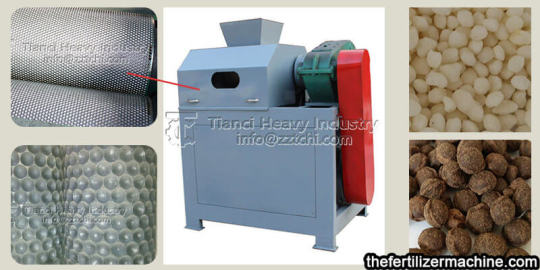
Both double roller granulator and rotary drum granulator are granulation equipment. It is suitable for the production of high, medium and low concentration compound fertilizers. However, there are some differences between the double roller granulator and the drum granulator.
1. Different granulation methods.
The double roller granulator adopts the dry granulation method, while the rotary drum granulator is a wet granulator. This means that you don't need to use other equipment to dry the product after granulating with the double roller fertilizer granulator. The granulator consumes less power and produces no pollution. In addition, it requires the moisture content of the raw material to be only 5%-10%. And relatively dry fertilizer granules can be obtained at normal temperature. But if you use a rotary granulator to make fertilizer granules, you need a drying cooler to dry them. You can save some money if you buy our granulator to produce compound fertilizer.
2. The working principle is different.
The structural design of the double roller granulator and the rotary drum granulator are different, so their working principles are also different. The rotary granulator uses the rotating motion of the drum to agglomerate the material particles into balls. The double-roller granulator uses mechanical pressure to process powdery materials into fertilizers of different shapes.
3. The shape of fertilizer particles can be different.
A rotary drum granulator can form the product into a roughly spherical shape. But the double roller granulator can produce fertilizer products in various shapes, such as pillow shape, rod shape, pellet shape, walnut shape, and square bar shape.
3 notes
·
View notes
Text
Advantages and disadvantages of mainstream organic fertilizer granulator

As the key equipment of the organic fertilizer production line, the organic fertilizer granulator can not be ignored. Common organic fertilizer granulators include: npk fertilizer granulator, drum granulator, disc granulator machine, new organic fertilizer Granulator, new two-in-one organic fertilizer granulator, flat die granulator, ring die granulator, all kinds of granulators have their own production characteristics, and the fertilizer granulator machine price vary.
Before buying, it is necessary to understand the advantages and disadvantages of each organic fertilizer granulator machine:
1. Extrusion granulator belongs to dry granulation. Advantages: no drying process, high particle density, good fertilizer effect, and full organic matter content; it also saves money for buying dryers and coolers, and does not need to burn coal in the future. This saves a lot of money. Disadvantages: The granules of the extrusion granulator are flat and round, and the fluidity is not very good when the field crop machine is easy to get stuck, so if it is an organic fertilizer made for machine farmers, use this granulation process with caution.
2. The drum granulation is a compound fertilizer granulation process, which can be used to produce organic fertilizer, but the granulation rate is low and there are few users. This process can be selected if organic, inorganic, organic fertilizers are produced.
3. The disc granulator machine is a relatively traditional process, which has the advantages of smooth granules and good appearance; the disadvantage is low density; at present, people are pursuing new granulation methods, so there are fewer and fewer users.
2 notes
·
View notes
Text
Unlocking the Secrets of Tree Fertilizers

Trees stand as pillars of life, silently contributing to the ecological balance and enriching our surroundings with beauty and oxygen. Yet, like all living organisms, trees require essential nutrients to thrive. While nature often provides these nutrients, sometimes trees need a little help to reach their full potential. That's where tree fertilizers come into play. In this comprehensive guide, we delve deep into the world of tree fertilizers, exploring their importance, types, application methods, and the science behind their effectiveness.
Understanding the Importance of Tree Fertilizers
Fertilizers play a vital role in the health and vitality of trees. Just like humans need a balanced diet for optimal health, trees require essential nutrients to grow, develop, and resist diseases. These nutrients primarily include nitrogen (N), phosphorus (P), and potassium (K), often referred to as NPK, along with secondary nutrients like calcium, magnesium, and sulfur, and trace elements such as iron, manganese, zinc, copper, boron, and molybdenum. For more information visit tree trimming Pittsburgh.
In natural ecosystems, trees obtain these nutrients from the soil, organic matter, and symbiotic relationships with other organisms. However, in urban environments or degraded landscapes, soil quality may be poor, lacking essential nutrients. Furthermore, factors such as pollution, compacted soil, and root damage can impede nutrient uptake by trees. This is where fertilizers come into play, providing trees with the nutrients they need for healthy growth and resilience.
Types of Tree Fertilizers
Tree fertilizers come in various forms, each with its unique characteristics and applications. The three primary types of fertilizers used for trees are
Granular Fertilizers: Granular fertilizers consist of small, solid particles that are typically spread around the base of the tree and incorporated into the soil. These fertilizers release nutrients gradually over time, providing a steady supply of essential elements to the tree's roots. Granular fertilizers are convenient to use and are suitable for both young and mature trees.
Liquid Fertilizers: Liquid fertilizers are solutions containing dissolved nutrients that can be applied directly to the soil or sprayed onto the foliage of trees. Liquid fertilizers are fast-acting, allowing trees to absorb nutrients quickly through their roots or leaves. They are often used as a supplement to granular fertilizers or as a foliar spray for addressing specific nutrient deficiencies.
Spike Fertilizers: Spike fertilizers are solid stakes or spikes infused with nutrients that are driven into the soil around the tree's drip line. As water penetrates the soil, it dissolves the nutrients from the spikes, which are then absorbed by the tree's roots. Spike fertilizers provide a convenient and targeted method of delivering nutrients directly to the root zone of trees.
Additionally, organic fertilizers derived from natural sources such as compost, manure, bone meal, and fish emulsion are gaining popularity due to their environmentally friendly nature and ability to improve soil health over time.
Factors to Consider When Choosing Tree Fertilizers
Selecting the right fertilizer for your trees requires careful consideration of several factors, including
Nutrient Requirements: Different tree species have varying nutrient requirements based on factors such as their growth rate, age, soil conditions, and environmental stressors. Conducting a soil test can help determine the specific nutrient needs of your trees and guide your fertilizer selection.
Formulation: Fertilizers come in various formulations, each tailored to meet specific nutrient requirements. Pay attention to the NPK ratio and the presence of secondary nutrients and trace elements to ensure comprehensive nutrition for your trees.
Application Method: Consider the most suitable application method based on the size, age, and health of your trees, as well as your preferences and resources. Granular fertilizers are ideal for widespread application around the base of trees, while liquid fertilizers offer flexibility for targeted or foliar applications.
Environmental Impact: Choose fertilizers that are environmentally sustainable and minimize the risk of nutrient runoff, leaching, and pollution. Look for slow-release formulations and organic options that promote soil health and microbial activity.
Best Practices for Applying Tree Fertilizers
Proper application of fertilizers is essential to maximize their effectiveness and minimize potential harm to trees and the environment. Follow these best practices when applying tree fertilizers
Timing: Apply fertilizers during the tree's active growing season, typically in early spring or late fall, to ensure optimal nutrient uptake. Avoid fertilizing during periods of drought or extreme weather conditions.
Quantity: Use the appropriate amount of fertilizer based on the tree's nutrient requirements, as indicated by soil test results or fertilizer recommendations. Over-fertilization can lead to nutrient imbalances, root damage, and environmental pollution.
Placement: Distribute granular fertilizers evenly around the drip line of the tree, where the majority of the roots are located. Avoid direct contact with the tree trunk to prevent root burn and damage.
Watering: Water the soil thoroughly after applying fertilizers to help nutrients penetrate the root zone and minimize the risk of nutrient runoff. Maintain adequate soil moisture levels to support healthy nutrient uptake by the tree.
Safety Precautions: Follow safety guidelines when handling and applying fertilizers, including wearing protective clothing, gloves, and eyewear, and keeping children and pets away from treated areas.
Monitoring and Adjusting Fertilizer Practices
Regular monitoring of tree health and growth can help evaluate the effectiveness of fertilization practices and identify any nutrient deficiencies or excesses. Keep an eye out for signs of stress, such as yellowing leaves, stunted growth, or pest infestations, which may indicate underlying nutrient imbalances.
Periodic soil testing can provide valuable insights into soil nutrient levels and pH levels, allowing for adjustments to fertilizer applications as needed. Soil amendments such as lime or sulfur can be used to modify soil pH and improve nutrient availability to trees.
Conclusion
Tree fertilizers play a crucial role in promoting the health, vigor, and longevity of trees in urban and natural environments alike. By supplying essential nutrients and enhancing soil fertility, fertilizers support robust growth, resilience to environmental stressors, and overall ecosystem health.
When selecting and applying tree fertilizers, it's essential to consider factors such as nutrient requirements, fertilizer formulation, application method, and environmental sustainability. By following best practices and monitoring tree health, we can ensure that our trees receive the nutrients they need to thrive for generations to come.
0 notes
Text

Daughter: Mom, I've been learning about fertilizers in my science class, and I find it fascinating how they can enhance crop growth. Could you tell me more about them?
Mother: Of course, dear. Fertilizers are indeed essential for agriculture. They're substances containing essential nutrients that plants need for healthy growth and development.
Daughter: What are the main nutrients in fertilizers, and why are they important?
Mother: Well, fertilizers typically contain three primary nutrients: nitrogen (N), phosphorus (P), and potassium (K), often referred to as NPK. Nitrogen is crucial for leaf and stem growth, phosphorus aids in root development and flowering, while potassium supports overall plant health and disease resistance.
Daughter: How do farmers know which fertilizers to use for their crops?
Mother: Farmers determine the type and amount of fertilizer needed based on soil tests and the specific nutrient requirements of the crops they're growing. For instance, if soil tests reveal a deficiency in nitrogen, they may opt for a nitrogen-rich fertilizer like ammonium nitrate or urea.
Daughter: Are there different types of fertilizers?
Mother: Yes, there are various types of fertilizers classified based on their nutrient content and release mechanism. For example, there are organic fertilizers derived from natural sources like compost, manure, or bone meal, which release nutrients slowly over time. On the other hand, there are synthetic fertilizers, which are manufactured chemically and often release nutrients more rapidly.
Daughter: Could you give me some examples of each type?
Mother: Certainly. Organic fertilizers include compost, fish emulsion, and seaweed extracts. These are beneficial for improving soil structure and fertility over the long term. Synthetic fertilizers, on the other hand, include ammonium sulfate, superphosphate, and potassium chloride. These are typically more concentrated and provide a quick nutrient boost to plants.
Daughter: Are there any drawbacks to using fertilizers?
Mother: While fertilizers can significantly enhance crop yields, improper use or overuse can lead to environmental problems like nutrient runoff, soil degradation, and water pollution. That's why it's crucial for farmers to apply fertilizers judiciously, following recommended guidelines and considering factors like soil type, crop type, and weather conditions.
Daughter: I see. So, fertilizers play a vital role in agriculture, but their responsible use is essential to minimize negative impacts on the environment.
Mother: Exactly, dear. Finding the right balance between agricultural productivity and environmental sustainability is key to ensuring a healthy and prosperous future for generations to come. http://dlvr.it/T6mcYr
0 notes
Text
Pothos fertilizer
Introduction: Pothos plants, with their vibrant foliage and easy-care nature, have become a beloved choice for indoor gardeners. These versatile plants not only add a touch of greenery to any space but also help purify the air. To ensure your pothos thrives and continues to brighten up your home, proper fertilization is key. In this guide, we'll delve into the essential aspects of fertilizing pothos plants, enabling you to cultivate lush and healthy specimens in your home.
Understanding Pothos Fertilizer Needs: Pothos plants are not heavy feeders, meaning they do not require frequent fertilization. However, providing them with the right nutrients at the appropriate times can significantly enhance their growth and appearance. Pothos typically benefit from a balanced fertilizer, which supplies essential macro and micronutrients in suitable proportions. Look for a fertilizer with an NPK (Nitrogen, Phosphorus, Potassium) ratio of around 20-20-20 or similar, which provides a balanced blend for overall plant health.
When to Fertilize: Fertilizing your pothos plants during their active growing season, which typically spans from spring to early fall, is crucial. During this period of vigorous growth, the plant's nutrient requirements are higher, and fertilization can support robust foliage development. Aim to fertilize your pothos every four to six weeks during this period. In contrast, reduce or cease fertilization during the plant's dormant phase in the winter months when growth slows down.
Application Methods: There are various methods for applying fertilizer to pothos plants, each with its advantages. Here are some common approaches:
Liquid Fertilizer: Dilute liquid pothos fertilizer to half or quarter strength and apply it directly to the soil during watering sessions. This allows for efficient nutrient absorption by the plant's roots.
Slow-Release Pellets: These pellets gradually release nutrients into the soil over an extended period, reducing the frequency of fertilizer application. Simply place the pellets in the soil according to package instructions.
Foliar Feeding: Occasionally, you can mist the foliage of your pothos with a diluted liquid fertilizer solution. However, this method should complement rather than replace soil fertilization.
Organic Alternatives: If you prefer organic options, consider using compost or compost tea to fertilize your pothos plants. These natural fertilizers enrich the soil and promote a healthy soil ecosystem.
Precautions and Tips:
Always follow the instructions provided on the fertilizer packaging to prevent overfertilization, which can harm your pothos.
Before applying fertilizer, ensure that the soil is moist to prevent root burn.
Flush the soil periodically with water to prevent salt buildup from fertilizers.
Monitor your pothos plants for signs of nutrient deficiencies or excesses, such as yellowing leaves or stunted growth, and adjust your fertilization regimen accordingly.
Conclusion: Fertilizing your pothos fertilizer plants appropriately is a simple yet essential aspect of their care routine. By understanding their fertilizer needs and adopting suitable application methods, you can ensure that your pothos thrives and continues to adorn your home with its lush foliage. With a little attention to fertilization, your pothos plants will reward you with vibrant growth and enduring beauty.
0 notes
Text
Understanding the Essentials: NPK Fertilizer
In the world of agriculture and gardening, the term NPK fertilizer is frequently mentioned, often accompanied by numbers representing different ratios. But what exactly is NPK fertilizer, and why is it crucial for plant growth? Let's delve into the basics and explore why this trio of nutrients is essential for cultivating healthy, thriving plants.
NPK stands for nitrogen (N), phosphorus (P), and potassium (K), which are three vital elements necessary for plant growth. Each of these nutrients plays a unique role in various aspects of a plant's development:

Nitrogen (N): Nitrogen is crucial for the formation of amino acids, proteins, and chlorophyll, all of which are essential for plant growth and photosynthesis. It promotes lush, green foliage and overall plant vigor. Nitrogen deficiency often results in stunted growth, yellowing leaves, and poor fruit or flower production.
Phosphorus (P): Phosphorus is involved in several key processes within plants, including root development, flowering, and fruiting. It aids in energy transfer and the formation of DNA and RNA. Phosphorus deficiency can lead to weak root systems, delayed maturity, and poor seed or fruit production.
Potassium (K): Potassium helps regulate various physiological processes in plants, such as water uptake, photosynthesis, and enzyme activation. It contributes to disease resistance, stress tolerance, and overall plant health. Potassium deficiency may manifest as weak stems, leaf scorching, and susceptibility to pests and diseases.
The numbers displayed on NPK fertilizer labels represent the percentage of each nutrient in the product, in the order of nitrogen-phosphorus-potassium. For example, a fertilizer labeled as 10-10-10 contains 10% nitrogen, 10% phosphorus, and 10% potassium by weight.
Choosing the right NPK ratio depends on the specific needs of the plants being grown and the stage of growth. For instance, a high-nitrogen fertilizer (such as 20-10-10) is suitable for promoting vegetative growth in leafy greens and grasses. In contrast, a balanced fertilizer (like 10-10-10) is suitable for general-purpose use on a variety of plants. Fertilizers with higher phosphorus (e.g., 5-10-5) are ideal for encouraging flowering and fruiting in plants.
However, it's essential to use NPK fertilizers judiciously, as excessive application can lead to nutrient imbalances, environmental pollution, and harm to beneficial soil organisms. Soil testing can help determine nutrient deficiencies and guide fertilizer application rates.
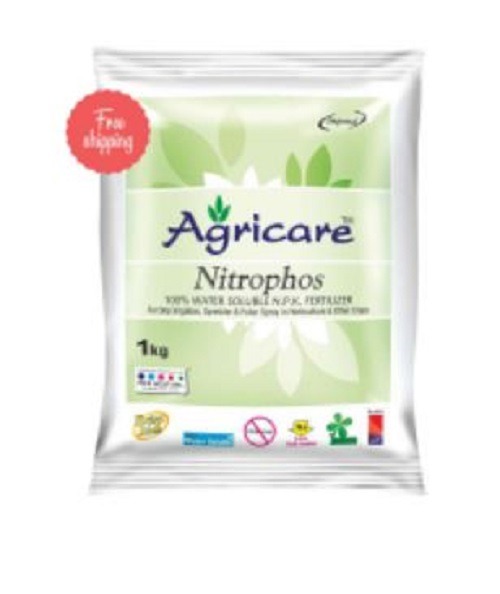
In summary, NPK fertilizer is a cornerstone of plant nutrition, providing essential nutrients needed for healthy growth and development. Understanding the roles of nitrogen, phosphorus, and potassium and their respective ratios empowers gardeners and farmers to make informed decisions, resulting in vibrant, productive plants and bountiful harvests.
0 notes
Text
Good Number Of Reviews Before Using Gartenpflege Wien
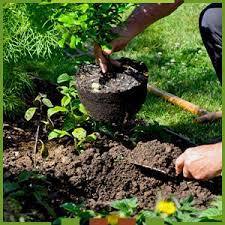
Vienna one is the most when compared to a East Virginia area; now this charming and public downtown benefits a large number of galleries, bistros and therefore malls in support of folks to appreciate being next to Hair Traps Live theater, Tysons Part window shopping community and even W&OD Trail. All of our landscapers also help choose state this particular covet within the country through the process of shutting residential and commercial estates inside splendidly beautiful art work.
A Garden service Vienna vary from landscaping trimming, weed command and also conception purposes, bush trimming, backyard sleep weeding coupled with mulching into fall over not to mention may which can garden plants theme, Garden maintenance Vienna also door installation solutions to give you one-stop malls for the desires. Our group will be able to get in touch with on your own an unit consistent with person desires with an upfront approximate to attempt business as needed. More favorable usually is to click on this link and take a look at much of our reputable webpage to find out about Garden worker Vienna.
You will need can add an amazing unique component part for your your home. Not only will this item produce a restful location you invest an individual's time and provide fresh new plant based remedies as well as veges, this can possibly multiply it has the all around increased value considerably. As it pertains to preserving your organic vegetable garden it is essential that a few particular things remain notion, consisting of comprehending the kind of fertilizer then mulch systems to apply, guidelines on how to gear weeds fruitfully, or every time very specific activities want mowing and also reseeding will have to be undertaken. While on an pleasing flowerbed causes your own home appearance the product's prime along with raising overall terrain beliefs all around As these kinds of thoughts mustn't be ignored seeing that with well maintained back yards accelerates each of those attributes although soaring homes respects substantially.
Protecting a patio and furthermore Garden care Vienna will involve a serious amounts of commitment using residence owners; lots of thinks at a loss for this career on it's own. One good thing is, gardening solutions be available that feature service getting rid of your personal load 2 . each of these pros offer up patio furniture from landscaping mowing along with mulching goods and services, leaf cleanups, flowerbed tile trim, bush pruning professional services, weed restrain uses and in some cases bonsai tree shaping . . . utilizing top level ratings to Property Advisor so that you know you were who receive top-quality offerings for the investment! All those who need to know Gartenpflege Wien, they can go here.
vimeo
Vienna is definitely amazing location both of these rest and then take a trip to, well known for it really is very long past and scores of leisure areas not to mention pubs to go through. Vienna has an amazing project here in fostering specific geographic area backyard gardens because locals, which is actually great rationale. These initiatives seek to produce individuals an event on mother nature through municipality restricts while allowing do-it-yourself population and inspiring your meals processing relations. One of several stimulating recreation folk take pleasure in at the time Horticulture Vienna is expanding their own internal produce. NPK Gartenpflege Target inside Vienna is an fantastic wide variety of vegetation equipment and supplies, additionally infrequently found and so innovative garden plants, professional person Garden service Vienna. NPK Gartenpflege This site offers herb garden routine maintenance expert services both hands or increase your health insurance and image of your residence. Today's skilled organization makes a specialty of pruning, mulching, weeding, seeding and also water; reducing brush; mowing and trimming pitch; travelling across hikes; purchasing pergolas trellises fences etcetera / yet by means of diverse smaller sized truck equipment for example like lawn mowers tractors to end these types of services.
Buyers interested in embark on growing on their own may possibly also hope to inside a location garden area. People moves tend to be on the market to virtually anyone and offer enough space available for benefits, vegetables and flowering plants of all kinds By often times from town locations and additionally serviced using volunteers.
0 notes
Text
Enhancing Crop Productivity with Advanced Agriculture Chemicals
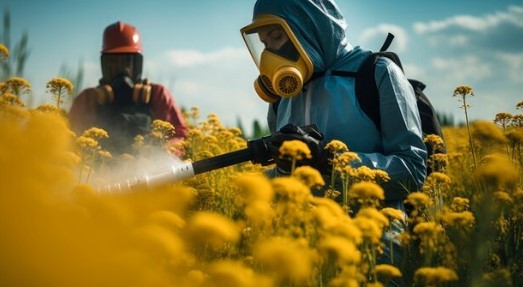
The Agriculture Chemical Market plays a crucial role in modern farming practices by providing essential inputs to enhance crop productivity and protect plants from pests and diseases. In this blog, we'll explore how advanced agriculture chemicals are revolutionizing the agriculture industry and driving improvements in crop yields and overall agricultural efficiency.
Fertilizers for Nutrient Management:
Fertilizers are essential inputs in agriculture, supplying plants with essential nutrients for growth and development. Traditional fertilizers contain nitrogen, phosphorus, and potassium (NPK), but advanced formulations also include micronutrients such as zinc, copper, and boron, tailored to specific crop requirements. These fertilizers help farmers optimize nutrient levels in the soil, leading to healthier plants and higher yields.
Pesticides and Herbicides for Pest Control:
Pesticides and herbicides are vital tools for managing pests, weeds, and diseases that can damage crops and reduce yields. Advanced formulations of pesticides and herbicides are designed to target specific pests while minimizing environmental impact and non-target effects. Integrated pest management (IPM) strategies combine chemical control with cultural, biological, and mechanical methods to reduce reliance on pesticides and promote sustainable pest management practices.
Biologicals and Biopesticides:
Biologicals and biopesticides are gaining popularity as eco-friendly alternatives to traditional chemical pesticides. These products contain naturally occurring microorganisms, such as bacteria, fungi, and viruses, that target pests while minimizing harm to beneficial insects and non-target organisms. Biologicals offer effective pest control with reduced environmental impact and are compatible with organic farming practices.
Soil Conditioners and Amendments:
Soil conditioners and amendments are used to improve soil structure, fertility, and water retention, leading to healthier plants and higher yields. Products such as compost, biochar, and gypsum help restore soil health, enhance nutrient availability, and promote root development. Additionally, soil pH modifiers such as lime and sulfur are used to adjust soil acidity or alkalinity to optimal levels for plant growth.
Plant Growth Regulators:
Plant growth regulators (PGRs) are chemicals that influence plant growth and development, regulating processes such as seed germination, flowering, and fruit set. PGRs can enhance crop yields by promoting root growth, increasing flower and fruit production, and improving stress tolerance. Advanced formulations of PGRs are tailored to specific crops and growth stages, providing precise control over plant physiology.
Precision Application Technologies:
Precision application technologies, such as variable rate application (VRA) systems and GPS-guided sprayers, enable farmers to apply agriculture chemicals with precision, optimizing input use and minimizing waste. These technologies help reduce environmental impact, improve resource efficiency, and maximize the effectiveness of agriculture chemical applications.
Conclusion:
Advanced Agriculture Chemical are revolutionizing modern farming practices by providing farmers with innovative tools to enhance crop productivity, improve soil health, and minimize environmental impact. By leveraging the latest advancements in fertilizers, pesticides, biologicals, and precision application technologies, farmers can optimize agricultural efficiency, increase yields, and ensure sustainable food production for future generations.
#Agriculture Chemical Industry#Global Agrochemical Industry#Agricultural Chemicals Market Research Reports#Agricultural Chemicals Industry Research Reports#Agriculture Chemical Market Analysis#Agriculture Chemical Market Demand#Agriculture Chemical Market Forecast#Agriculture Chemical Market Growth#Agriculture Chemical Market Outlook#Agriculture Chemical Market Revenue#Agriculture Chemical Market Size#Agriculture Chemical Market Trends#Agriculture Chemical Brands in Market#Agricultural Chemicals#Chemicals Used in Agriculture#Agriculture Chemical Companies#Agricultural Chemical Suppliers#Agriculture Chemical Malaysia#Agricultural Chemical Manufacturers
0 notes
Text
Arabian Jasmine
ARABIAN JASMINE
Arabian Jasmine flowers are king of fragrant flowers. Jasmine are of more than 200+ varieties around the world. But Arabian jasmine occupies the remarkable place for strong fragrance & layered flowers. Jasmine is belonging to genus Jasminum and family Oleraceae.
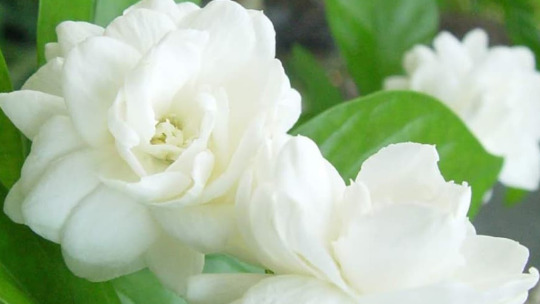
Arabian jasmine flower
This Arabian jasmine flowers are bright white, double layered, tubular, lobed oval flowers contain 9 to 10 petals has sweet & strong fragrance throughout your garden. Flowers contains two stamens with very short filaments.
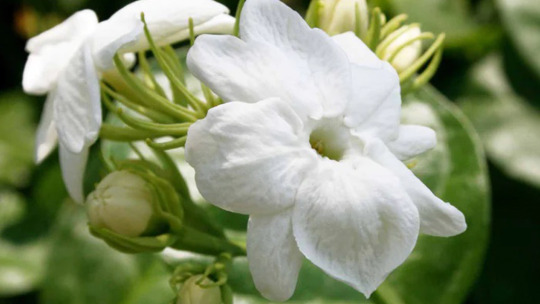
Arabian jasmine plant
Like all jasmine plant varieties, this plant is perennial evergreen with thin woody branches. Arabian jasmine plants are small shrubs with lush foliage. And its climber vines reach up to the height of 25-30 cm & spreads wide 10-20 cm. Arabian jasmine plants are native to Asia, grows healthy & excellent in all climatic conditions of India.
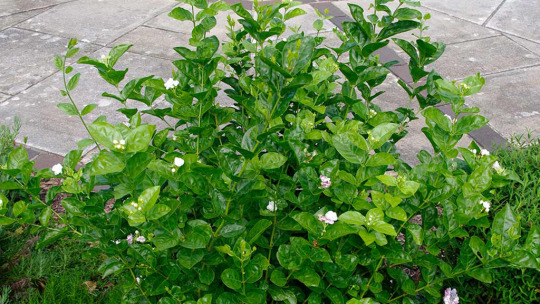
Jasminum sambac
Arabian jasmine flower has scientific name Jasminum sambac spreads rapidly as shrub or veins with upright habits. Jasminum sambac is popularly called as “Belle of India” meaning Queen of India. Presence of Scent fragrance refreshes the mind & environment.

How to grow Arabian jasmine
Arabian jasmine plants are considered as‘megastar of garden’. This can grow well in garden areas such as home garden & terrace garden. This plant can be grown in grow bags, pots or any suitable container.
Flower farmer’s most cultivated plants are Arabian jasmine plants with high yield & it is most suitable for scent preparation purposes.
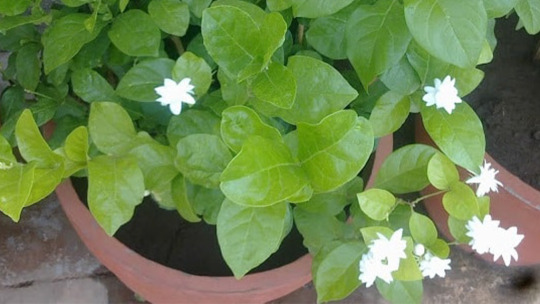
Soil
Arabian jasmine plants prefer to grow in loose, loamy, well-drained soil with some organic matter content mostly prefers to grow in acidic to slight acidic soil of pH of 4.5 to 6.9.
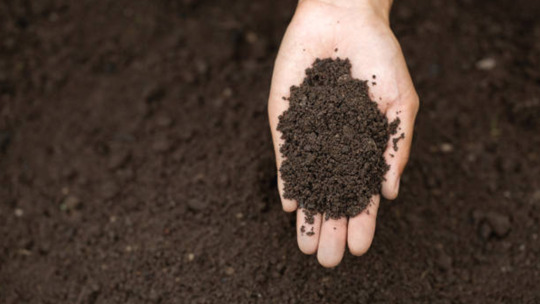
Sunlight
This plant requires ample of sun light i.e. is direct sun light of 4-6 hours. It can also tolerate in shade.

Temperature
Ideal temperature for Arabian jasmine plant is 85-90 degree Celsius during day time & in night time 70-80 degree Celsius.
Watering
Moderate to average water application is given. Alternate day water application but not to make the soil soggy & wet. Because overwatering may lead to root rot diseases. Avoid watering in winter seasons(November-December).
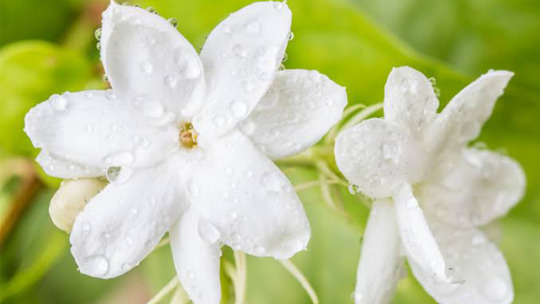
Fertilizer
Application of organic fertilizer such as vermicompost, cow manure or goat manure, Groundnut cake powder for nitrogen enhancement & to increase soil fertility.

Organic fertilizer for pest attack
Application of Neem oil, Bio-Npk, Steamed bone meal once in three months. Not to over fertilize the plants. Application of organic fertilizer given only in required quantity. Prefer to grow plants by using organic fertilizer.
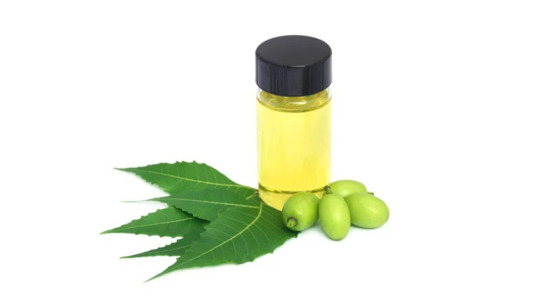
Repotting
This plant does not like to grow in too large pot, because it may lead to water stagnation. Select the pot of 3-4’’and once if the plant grows large. Transfer the plants to big size pot compared to last one but most importantly not to damage the roots.
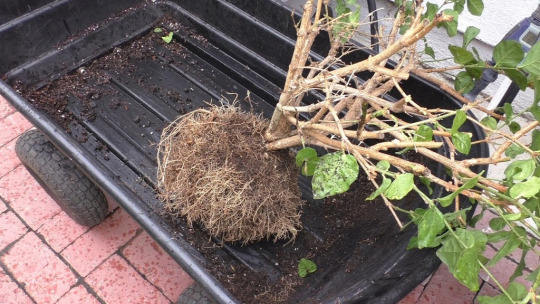
Pruning:
Prune the Arabian jasmine plants in winter, because flower blooming will be less compared to other seasons.Trim the old, diseased and matured plant parts to encourage fast growth in plants.

Harvest:
To get fresh flower yield, fully developed & unopened flower buds are hand-picked in the early morning or late evening. Probably harvesting time starts from 6 months after planting.
Life time of Jasmine plant:

Yield:
Expected average yield of about 800-900 kg of flowers per acre. In houseplant we can expect about 1kg of flower yield.

All and above grow plants good and healthy by using organic & traditional method of practices to grow plants. Go green and make our environment clean & green.
Blog compiled by : Santhionlineplants
#ARABIAN JASMINE#Arabian Jasmine flowers are king of fragrant flowers. Jasmine are of more than 200+ varieties around the world. But Arabian jasmine occupie#Jasmine flower#Arabian jasmine flower#This Arabian jasmine flowers are bright white#double layered#tubular#lobed oval flowers contain 9 to 10 petals has sweet & strong fragrance throughout your garden. Flowers contains two stamens with very short#Arabian jasmine plant#Like all jasmine plant varieties#this plant is perennial evergreen with thin woody branches. Arabian jasmine plants are small shrubs with lush foliage. And its climber vine#grows healthy & excellent in all climatic conditions of India.#Arabian jasmine flower plant#Jasminum sambac#Arabian jasmine flower has scientific name Jasminum sambac spreads rapidly as shrub or veins with upright habits. Jasminum sambac is popula#jasminum sambac#How to grow Arabian jasmine#Arabian jasmine plants are considered as‘megastar of garden’. This can grow well in garden areas such as home garden & terrace garden. This#pots or any suitable container.#Flower farmer’s most cultivated plants are Arabian jasmine plants with high yield & it is most suitable for scent preparation purposes.#arabian jasmine growth#Soil#Arabian jasmine plants prefer to grow in loose#loamy#well-drained soil with some organic matter content mostly prefers to grow in acidic to slight acidic soil of pH of 4.5 to 6.9.#soil#Sunlight#This plant requires ample of sun light i.e. is direct sun light of 4-6 hours. It can also tolerate in shade.#Temperature#Ideal temperature for Arabian jasmine plant is 85-90 degree Celsius during day time & in night time 70-80 degree Celsius.
3 notes
·
View notes
Link
1 note
·
View note